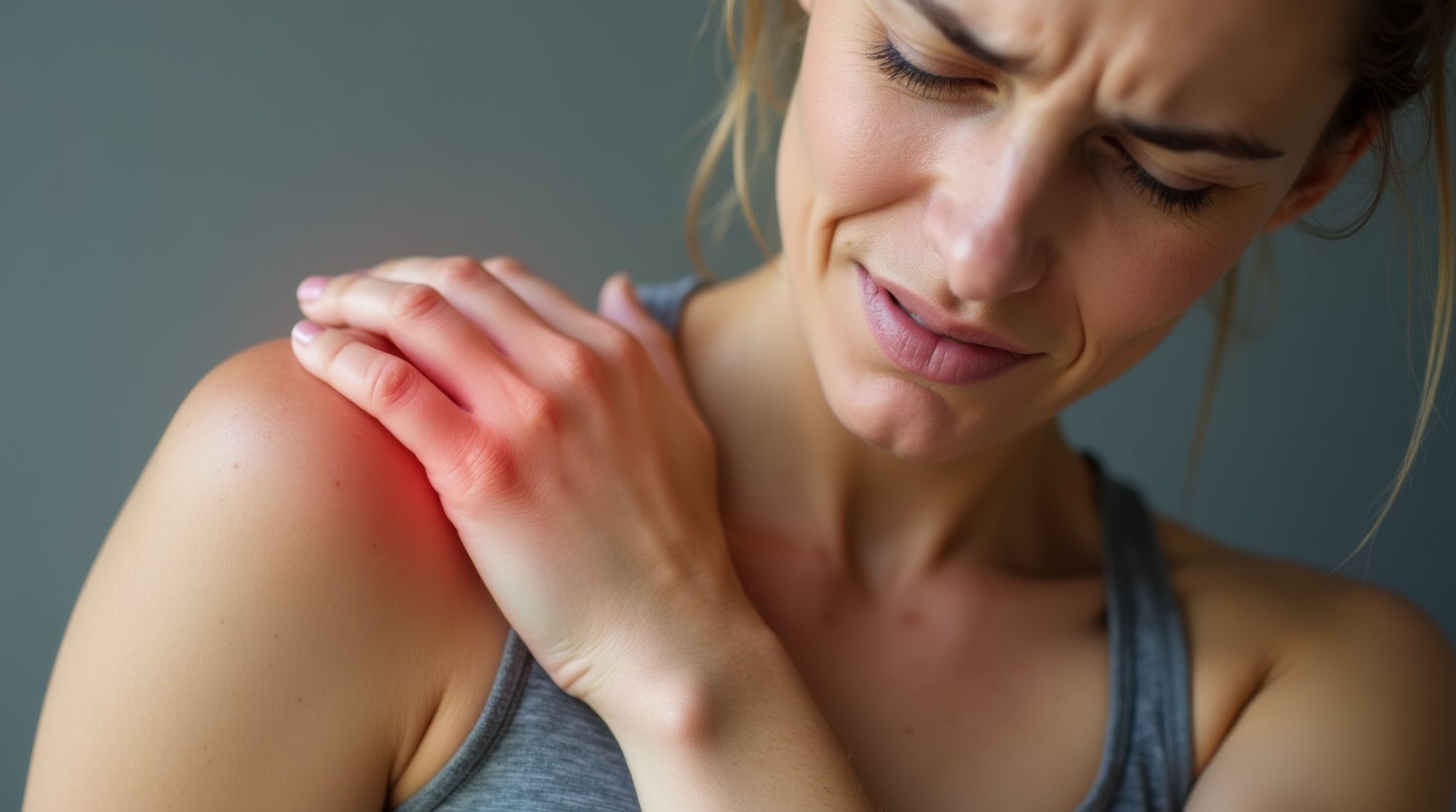

· By Gareld Eaton
Is Muscle Soreness Slowing You Down? How to Spot Recovery Gaps
Why Recovery Matters for Active Adults
If muscle soreness is affecting your ability to stay active, you're not alone. Many adults experience delayed onset muscle soreness (DOMS) after workouts or physical activity, leading to stiffness, discomfort, and reduced mobility. While soreness is a natural response to exertion, persistent or excessive discomfort can indicate recovery gaps that may slow down progress and increase injury risk.
One key aspect of maintaining muscle wellness is pre-workout preparation—a strategy that helps the body get ready for exertion and supports overall movement efficiency. Many athletes and active individuals focus primarily on post-exercise recovery, often overlooking the role of pre-workout self-care. Incorporating hydration, balanced nutrition, dynamic warm-ups, and topical applications into a pre-exercise routine may help support mobility and movement comfort before workouts.
This article will help you identify common recovery gaps and introduce practical solutions to keep your body performing at its best. Understanding the science behind muscle recovery can empower you to make informed decisions and incorporate effective techniques that enhance performance, minimize soreness, and prevent injuries.
(Related: The Science Behind CBD: How It Works and Why It Matters)
Understanding Muscle Soreness and Recovery Gaps
What is Delayed Onset Muscle Soreness (DOMS)?
DOMS typically occurs 12-48 hours after exercise, resulting from microscopic muscle fiber damage. This process is necessary for muscle growth and adaptation, but without proper recovery, it can lead to prolonged discomfort and decreased performance. The inflammatory response associated with DOMS triggers soreness and stiffness, affecting mobility and workout consistency.
Common Recovery Gaps That Can Hinder Your Performance
-
Inadequate Hydration - Dehydration can worsen muscle fatigue and slow recovery. Water is essential for nutrient transportation, cellular repair, and toxin elimination.
-
Poor Sleep Quality - Muscles repair during deep sleep, making rest essential. Lack of sleep reduces muscle protein synthesis and increases stress hormones, delaying recovery.
-
Lack of Proper Nutrition - Without enough protein, omega-3 fatty acids, and anti-inflammatory foods, muscles struggle to rebuild efficiently.
-
Skipping Active Recovery - Gentle stretching, low-impact movement, and foam rolling aid circulation and reduce stiffness, enhancing recovery.
-
Topical Applications - While many turn to traditional pain relief creams, others incorporate plant-based topicals like CBD, turmeric, and arnica into their recovery regimen.
Traditional Recovery Methods vs. Modern Alternatives
Historically, Indigenous cultures have used plant-based remedies like devils claw, Boswellia, ginger, arnica, turmeric, and herbal compresses for muscle recovery. Many of these natural methods remain highly effective today. Modern advancements have refined these remedies, integrating them into new scientifically-backed solutions such as CBD-infused topicals and creams, which target pain and inflammation without systemic side effects.
(Related: 5 Recovery Tools Active Adults Swear By for Staying on Track)
How CBD Muscle Rubs Can Help Fill Recovery Gaps
CBD interacts with the endocannabinoid system (ECS), which plays a role in various biological processes, including skin and muscle function. When applied topically, CBD remains localized at the application site and does not enter the bloodstream. Many individuals incorporate CBD topicals into their wellness routines as part of their pre and post-exercise self-care regimen.
Preliminary research suggests that CBD topicals may play a role in supporting skin health and comfort. Some studies, including one published in the Journal of Clinical Medicine, have explored the effects of transdermal cannabidiol applications, investigating their potential to influence muscle relaxation and overall wellness. While findings are still emerging, researchers continue to examine how cannabinoids interact with the body’s natural processes, in relation to supporting skin health.
Additionally, ingredients such as menthol, camphor, and arnica are commonly used in topical formulations for their well-known cooling and soothing properties, making them a popular choice in wellness routines.
(Read more: The Science Behind CBD)
Building a Better Recovery Plan
To support post-exercise recovery and maintain mobility, consider implementing the following wellness strategies:
-
Stay Hydrated: Drink water and electrolyte-rich fluids to maintain fluid balance and support overall well-being.
-
Nutrient-Dense Eating: Include a variety of whole foods such as wild salmon, nuts, leafy greens, and turmeric as part of a balanced diet.
-
Stretching and Foam Rolling: Incorporate movement-based recovery techniques to support flexibility and mobility.
-
Pre & Post Soaks: Warm baths before exercise can help loosen muscles and prepare joints for movement, while post-workout soaks—especially with Epsom salts or CBD-infused bath products—can aid in relaxation, muscle recovery, and inflammation management.
-
Topical Applications: Some individuals use CBD topicals as part of their pre and post-workout self-care routine, alongside stretching and other wellness practices.
Recognizing areas for improvement in recovery and making small adjustments can support overall muscle wellness and function. Whether through hydration, balanced nutrition, or incorporating self-care practices like CBD topicals, adopting a proactive approach to recovery may help maintain mobility and an active lifestyle.
(Next: 6 Recovery Tools Active Adults Swear By)
Disclaimers for Federal and State Compliance
General Disclaimer:
This article is for informational purposes only and is not intended as medical advice, diagnosis, or treatment. Always consult a qualified healthcare professional before using CBD products, especially if you are pregnant, nursing, taking medications, or have a medical condition.
FDA Disclaimer:
These statements have not been evaluated by the Food and Drug Administration (FDA). CBD products are not intended to diagnose, treat, cure, or prevent any disease.
Legal Disclaimer:
All Canncestra products are derived from hemp containing less than 0.3% THC, in compliance with the 2018 Farm Bill and federal regulations. CBD laws vary by state, and it is the user’s responsibility to ensure compliance with local laws in their jurisdiction.
Arizona State Compliance Disclaimer:
Canncestra’s products adhere to Arizona state laws, which require all CBD products to be derived from industrial hemp containing less than 0.3% THC. Products are intended for adult use only. Keep out of reach of children.
Product Use Disclaimer:
Individual results may vary. Canncestra is not responsible for any adverse effects resulting from misuse of products or failure to adhere to provided instructions.

